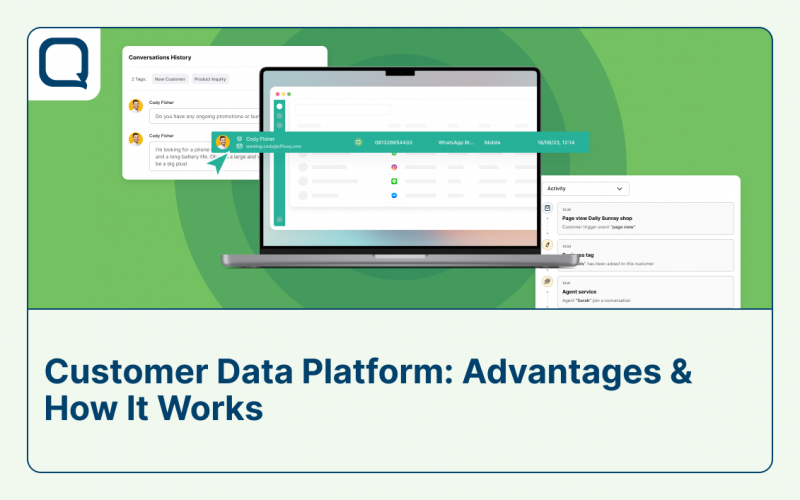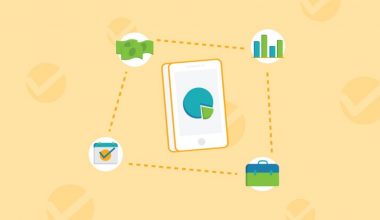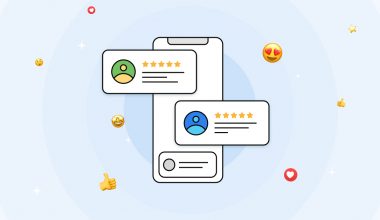In a personalization-driven marketing era, gathering consumer data in a Consumer Data Platform (CDP) is no longer an option but rather an essential part of business. Personalization has emerged as a critical component in the goal of rallying customer support and loyalty, especially in a marketplace saturated with data and intense competition.
However, when faced with a multitude of data from various sources about every customer, this question begs to be answered: How can we find the right information needed for a desired type of personalization strategy?
This is why possessing a CDP is critical for businesses. Companies can take advantage of CDPs to collect and combine customer data from many sources, such as websites, social media, and other customer interactions with businesses. This data becomes the fuel that enables the development of more effective marketing campaigns which are based on actual consumer needs. With a deep understanding of customer preferences and behavior, companies can tweak and provide personalized experiences, build strong relationships, and enhance customer retention rates.
What Constitutes a Customer Data Platform (CDP)?
A CDP is a software platform that collects, integrates, and manages customer data from numerous sources. CDP acts as a central data warehouse, allowing businesses to combine data from numerous channels and information sources, including websites, email marketing, social media, sales data, and third-party data.
According to the CDP Institute, CDPs are software designed to generate and manage an integrated customer database while also allowing this data to be accessed by other systems.
CDP assists businesses in combining all of these data into comprehensive and unified customer profiles, which can help in making better business decisions by providing deeper insights into customer behavior and market trends.
4 Benefits of a Customer Data Platform
Apart from integrating customer data into one platform, here are 4 other benefits of using a CDP:
1. Ease of Accessing Data
Apart from functioning as an efficient data management center, CDPs also provide easy and fast access to customer data from various distributed sources. When client data is scattered across various sources, such as websites, social media, customer calls, and sales transactions, searching, collecting, and understanding the data can become extremely challenging. CDPs eliminate this problem by consolidating all of the data into a single, easily accessible location.
CDPs enable marketing, sales, and customer support teams to swiftly access the information they require to carry out their responsibilities. Searching and combining this data without a CDP can be a difficult and time-consuming operation.
2. Improved Data Management
More organized data management using CDP is an important foundation for the efficiency and accuracy of company operations. With endless sources of information, customer data is often spread across different systems and platforms. On the other hand, a CDP integrates and stores all of these client data in a structured and organized manner. This means that data from many sources can be efficiently managed, making it easier for businesses to track critical information while reducing data redundancy.
Apart from that, organized data management also helps companies prevent the loss of valuable information. In a rapidly changing business environment, well-managed customer data can be an invaluable asset. With CDP, companies can ensure that important data is not overlooked or lost, allowing them to make better decisions using these data.
3. Integration with Third Parties
CDPs can link data with third-party applications, such as analytics tools, email marketing services, e-commerce, or even Customer Relationship Managament (CRM) tools. CDP integration with third-party tools allows companies to optimize the use of their data. This improves the effectiveness of marketing efforts, the quality of customer experience, and the overall performance of businesses. With synergy between CDPs and third parties, companies can achieve the full potential of their customer data to achieve larger business goals.
4. Provide Personalized Services Easily
One of the most essential advantages of a CDP is its ability to provide customers with more personalized and relevant services. Companies may design more personalized marketing campaigns and offer more relevant products if they have access to full, integrated data about customer behaviors and preferences.
Personalization has a direct effect on a customer’s experience. When customers feel that a company understands them well and provides content or services that meet their needs, it creates a more positive experience. This positive experience may be an important consideration in determining whether to stay loyal to a brand or switch to a competitor, which helps increase customer retention and loyalty.
How CDPs Work
The CDP operates in a thorough and structured procedure for efficiently gathering, managing, and utilizing customer data. Here’s a more detailed description of how CDPs work:
1. Collect Data From Various Communication Channels
CDPs can collect and store data from a variety of communication channels, including email, and social media such as Instagram, WhatsApp, and other platforms. What sort of data can be captured from these messages and interactions?
Businesses can collect a variety of data including:
- Customer identity
- Customer lifestyle
- Customer conversations
- Response to promotions
- Customer enquires
… and much more.
This allows businesses to better understand how customers interact with them through various channels.
2. Add Data to CDPs
Data from diverse sources will be integrated into CDPs. This process includes merging scattered data into one integrated data set. This combined data is a crucial step that allows companies to have a more comprehensive view of each customer.
3. Build Customer Profiles in CDPs
Once the data is collected and integrated, CDPs will build a comprehensive customer profile. This profile includes details such as name, address, purchase history, product preferences, communication history, and more. The more data are gathered, the more accurate and detailed the customer profiles built. This provides an in-depth view of every customer as an individual.
4. New Updated Information in Real-Time
CDPs work in real time, constantly monitoring and collecting fresh data from customers. CDPs automatically update customer profiles whenever new interactions or customer data are detected. This ensures that businesses always have access to the most recent client data, which is essential for managing relevant and effective marketing efforts.
Check out how the Qiscus Customer Data Platform works here.
Own Your Customer Data Platform from Qiscus Omnichannel Chat!
Qiscus CDP enables the aggregation of customer interaction data that occurs on the Qiscus Omnichannel Platform. The Qiscus Omnichannel Platform itself has been integrated with more than 20 different communication channels, providing more comprehensive data.
If you want to know more about Qiscus CDP, you can visit this link.
Do you have further questions about Qiscus CDP? Don’t hesitate to contact our team via the contact information provided or request a product demo!







